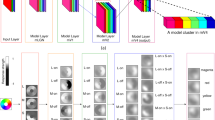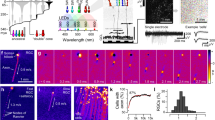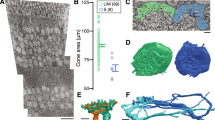Abstract
As soon as the results of Granit's micro-electrode experiments on the retinæ of animals were published, it was clear that a method was wanted for obtaining similar information with regard to the colour vision of man. This led to the development of the retinal microstimulator, which consists essentially of a microscope used in reverse, so that greatly diminished images of suitable test light-sources are presented to the eyes of the observer.
This is a preview of subscription content, access via your institution
Access options
Subscribe to this journal
Receive 51 print issues and online access
$199.00 per year
only $3.90 per issue
Buy this article
- Purchase on Springer Link
- Instant access to full article PDF
Prices may be subject to local taxes which are calculated during checkout
Similar content being viewed by others
Author information
Authors and Affiliations
Rights and permissions
About this article
Cite this article
HARTRIDGE, H. Colour Receptors of the Human Fovea. Nature 158, 97–98 (1946). https://doi.org/10.1038/158097c0
Issue Date:
DOI: https://doi.org/10.1038/158097c0
This article is cited by
-
Sensations from a single M-cone depend on the activity of surrounding S-cones
Scientific Reports (2018)
-
Beyond spectral tuning: human cone visual pigments adopt different transient conformations for chromophore regeneration
Cellular and Molecular Life Sciences (2016)
Comments
By submitting a comment you agree to abide by our Terms and Community Guidelines. If you find something abusive or that does not comply with our terms or guidelines please flag it as inappropriate.



